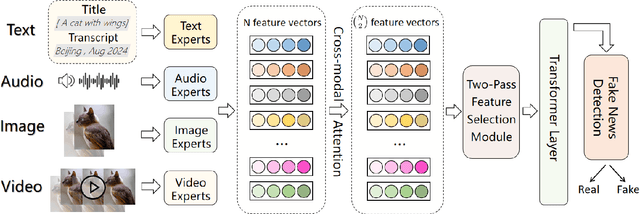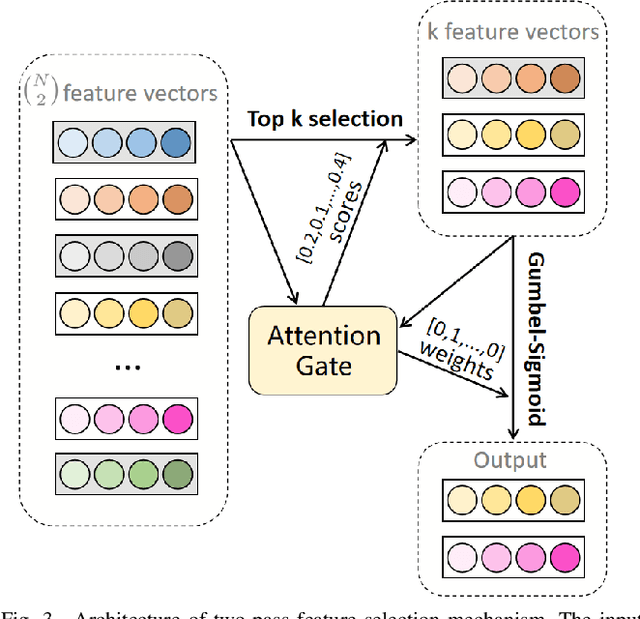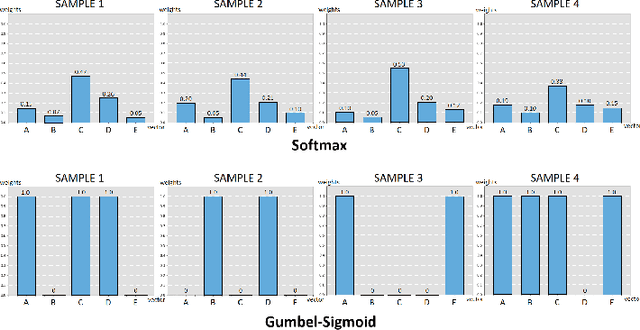Ruibo Fu
SynParaSpeech: Automated Synthesis of Paralinguistic Datasets for Speech Generation and Understanding
Sep 18, 2025Abstract:Paralinguistic sounds, like laughter and sighs, are crucial for synthesizing more realistic and engaging speech. However, existing methods typically depend on proprietary datasets, while publicly available resources often suffer from incomplete speech, inaccurate or missing timestamps, and limited real-world relevance. To address these problems, we propose an automated framework for generating large-scale paralinguistic data and apply it to construct the SynParaSpeech dataset. The dataset comprises 6 paralinguistic categories with 118.75 hours of data and precise timestamps, all derived from natural conversational speech. Our contributions lie in introducing the first automated method for constructing large-scale paralinguistic datasets and releasing the SynParaSpeech corpus, which advances speech generation through more natural paralinguistic synthesis and enhances speech understanding by improving paralinguistic event detection. The dataset and audio samples are available at https://github.com/ShawnPi233/SynParaSpeech.
Mitigating Audiovisual Mismatch in Visual-Guide Audio Captioning
May 28, 2025Abstract:Current vision-guided audio captioning systems frequently fail to address audiovisual misalignment in real-world scenarios, such as dubbed content or off-screen sounds. To bridge this critical gap, we present an entropy-aware gated fusion framework that dynamically modulates visual information flow through cross-modal uncertainty quantification. Our novel approach employs attention entropy analysis in cross-attention layers to automatically identify and suppress misleading visual cues during modal fusion. Complementing this architecture, we develop a batch-wise audiovisual shuffling technique that generates synthetic mismatched training pairs, greatly enhancing model resilience against alignment noise. Evaluations on the AudioCaps benchmark demonstrate our system's superior performance over existing baselines, especially in mismatched modality scenarios. Furthermore, our solution demonstrates an approximately 6x improvement in inference speed compared to the baseline.
Hearing from Silence: Reasoning Audio Descriptions from Silent Videos via Vision-Language Model
May 19, 2025Abstract:Humans can intuitively infer sounds from silent videos, but whether multimodal large language models can perform modal-mismatch reasoning without accessing target modalities remains relatively unexplored. Current text-assisted-video-to-audio (VT2A) methods excel in video foley tasks but struggle to acquire audio descriptions during inference. We introduce the task of Reasoning Audio Descriptions from Silent Videos (SVAD) to address this challenge and investigate vision-language models' (VLMs) capabilities on this task. To further enhance the VLMs' reasoning capacity for the SVAD task, we construct a CoT-AudioCaps dataset and propose a Chain-of-Thought-based supervised fine-tuning strategy. Experiments on SVAD and subsequent VT2A tasks demonstrate our method's effectiveness in two key aspects: significantly improving VLMs' modal-mismatch reasoning for SVAD and effectively addressing the challenge of acquiring audio descriptions during VT2A inference.
Exploring Modality Disruption in Multimodal Fake News Detection
Apr 12, 2025



Abstract:The rapid growth of social media has led to the widespread dissemination of fake news across multiple content forms, including text, images, audio, and video. Compared to unimodal fake news detection, multimodal fake news detection benefits from the increased availability of information across multiple modalities. However, in the context of social media, certain modalities in multimodal fake news detection tasks may contain disruptive or over-expressive information. These elements often include exaggerated or embellished content. We define this phenomenon as modality disruption and explore its impact on detection models through experiments. To address the issue of modality disruption in a targeted manner, we propose a multimodal fake news detection framework, FND-MoE. Additionally, we design a two-pass feature selection mechanism to further mitigate the impact of modality disruption. Extensive experiments on the FakeSV and FVC-2018 datasets demonstrate that FND-MoE significantly outperforms state-of-the-art methods, with accuracy improvements of 3.45% and 3.71% on the respective datasets compared to baseline models.
Deconfounded Reasoning for Multimodal Fake News Detection via Causal Intervention
Apr 12, 2025



Abstract:The rapid growth of social media has led to the widespread dissemination of fake news across multiple content forms, including text, images, audio, and video. Traditional unimodal detection methods fall short in addressing complex cross-modal manipulations; as a result, multimodal fake news detection has emerged as a more effective solution. However, existing multimodal approaches, especially in the context of fake news detection on social media, often overlook the confounders hidden within complex cross-modal interactions, leading models to rely on spurious statistical correlations rather than genuine causal mechanisms. In this paper, we propose the Causal Intervention-based Multimodal Deconfounded Detection (CIMDD) framework, which systematically models three types of confounders via a unified Structural Causal Model (SCM): (1) Lexical Semantic Confounder (LSC); (2) Latent Visual Confounder (LVC); (3) Dynamic Cross-Modal Coupling Confounder (DCCC). To mitigate the influence of these confounders, we specifically design three causal modules based on backdoor adjustment, frontdoor adjustment, and cross-modal joint intervention to block spurious correlations from different perspectives and achieve causal disentanglement of representations for deconfounded reasoning. Experimental results on the FakeSV and FVC datasets demonstrate that CIMDD significantly improves detection accuracy, outperforming state-of-the-art methods by 4.27% and 4.80%, respectively. Furthermore, extensive experimental results indicate that CIMDD exhibits strong generalization and robustness across diverse multimodal scenarios.
Detect All-Type Deepfake Audio: Wavelet Prompt Tuning for Enhanced Auditory Perception
Apr 09, 2025



Abstract:The rapid advancement of audio generation technologies has escalated the risks of malicious deepfake audio across speech, sound, singing voice, and music, threatening multimedia security and trust. While existing countermeasures (CMs) perform well in single-type audio deepfake detection (ADD), their performance declines in cross-type scenarios. This paper is dedicated to studying the alltype ADD task. We are the first to comprehensively establish an all-type ADD benchmark to evaluate current CMs, incorporating cross-type deepfake detection across speech, sound, singing voice, and music. Then, we introduce the prompt tuning self-supervised learning (PT-SSL) training paradigm, which optimizes SSL frontend by learning specialized prompt tokens for ADD, requiring 458x fewer trainable parameters than fine-tuning (FT). Considering the auditory perception of different audio types,we propose the wavelet prompt tuning (WPT)-SSL method to capture type-invariant auditory deepfake information from the frequency domain without requiring additional training parameters, thereby enhancing performance over FT in the all-type ADD task. To achieve an universally CM, we utilize all types of deepfake audio for co-training. Experimental results demonstrate that WPT-XLSR-AASIST achieved the best performance, with an average EER of 3.58% across all evaluation sets. The code is available online.
MTPareto: A MultiModal Targeted Pareto Framework for Fake News Detection
Jan 12, 2025Abstract:Multimodal fake news detection is essential for maintaining the authenticity of Internet multimedia information. Significant differences in form and content of multimodal information lead to intensified optimization conflicts, hindering effective model training as well as reducing the effectiveness of existing fusion methods for bimodal. To address this problem, we propose the MTPareto framework to optimize multimodal fusion, using a Targeted Pareto(TPareto) optimization algorithm for fusion-level-specific objective learning with a certain focus. Based on the designed hierarchical fusion network, the algorithm defines three fusion levels with corresponding losses and implements all-modal-oriented Pareto gradient integration for each. This approach accomplishes superior multimodal fusion by utilizing the information obtained from intermediate fusion to provide positive effects to the entire process. Experiment results on FakeSV and FVC datasets show that the proposed framework outperforms baselines and the TPareto optimization algorithm achieves 2.40% and 1.89% accuracy improvement respectively.
Neural Codec Source Tracing: Toward Comprehensive Attribution in Open-Set Condition
Jan 11, 2025



Abstract:Current research in audio deepfake detection is gradually transitioning from binary classification to multi-class tasks, referred as audio deepfake source tracing task. However, existing studies on source tracing consider only closed-set scenarios and have not considered the challenges posed by open-set conditions. In this paper, we define the Neural Codec Source Tracing (NCST) task, which is capable of performing open-set neural codec classification and interpretable ALM detection. Specifically, we constructed the ST-Codecfake dataset for the NCST task, which includes bilingual audio samples generated by 11 state-of-the-art neural codec methods and ALM-based out-ofdistribution (OOD) test samples. Furthermore, we establish a comprehensive source tracing benchmark to assess NCST models in open-set conditions. The experimental results reveal that although the NCST models perform well in in-distribution (ID) classification and OOD detection, they lack robustness in classifying unseen real audio. The ST-codecfake dataset and code are available.
Mel-Refine: A Plug-and-Play Approach to Refine Mel-Spectrogram in Audio Generation
Dec 11, 2024Abstract:Text-to-audio (TTA) model is capable of generating diverse audio from textual prompts. However, most mainstream TTA models, which predominantly rely on Mel-spectrograms, still face challenges in producing audio with rich content. The intricate details and texture required in Mel-spectrograms for such audio often surpass the models' capacity, leading to outputs that are blurred or lack coherence. In this paper, we begin by investigating the critical role of U-Net in Mel-spectrogram generation. Our analysis shows that in U-Net structure, high-frequency components in skip-connections and the backbone influence texture and detail, while low-frequency components in the backbone are critical for the diffusion denoising process. We further propose ``Mel-Refine'', a plug-and-play approach that enhances Mel-spectrogram texture and detail by adjusting different component weights during inference. Our method requires no additional training or fine-tuning and is fully compatible with any diffusion-based TTA architecture. Experimental results show that our approach boosts performance metrics of the latest TTA model Tango2 by 25\%, demonstrating its effectiveness.
LetsTalk: Latent Diffusion Transformer for Talking Video Synthesis
Nov 24, 2024



Abstract:Portrait image animation using audio has rapidly advanced, enabling the creation of increasingly realistic and expressive animated faces. The challenges of this multimodality-guided video generation task involve fusing various modalities while ensuring consistency in timing and portrait. We further seek to produce vivid talking heads. To address these challenges, we present LetsTalk (LatEnt Diffusion TranSformer for Talking Video Synthesis), a diffusion transformer that incorporates modular temporal and spatial attention mechanisms to merge multimodality and enhance spatial-temporal consistency. To handle multimodal conditions, we first summarize three fusion schemes, ranging from shallow to deep fusion compactness, and thoroughly explore their impact and applicability. Then we propose a suitable solution according to the modality differences of image, audio, and video generation. For portrait, we utilize a deep fusion scheme (Symbiotic Fusion) to ensure portrait consistency. For audio, we implement a shallow fusion scheme (Direct Fusion) to achieve audio-animation alignment while preserving diversity. Our extensive experiments demonstrate that our approach generates temporally coherent and realistic videos with enhanced diversity and liveliness.
 Add to Chrome
Add to Chrome Add to Firefox
Add to Firefox Add to Edge
Add to Edge